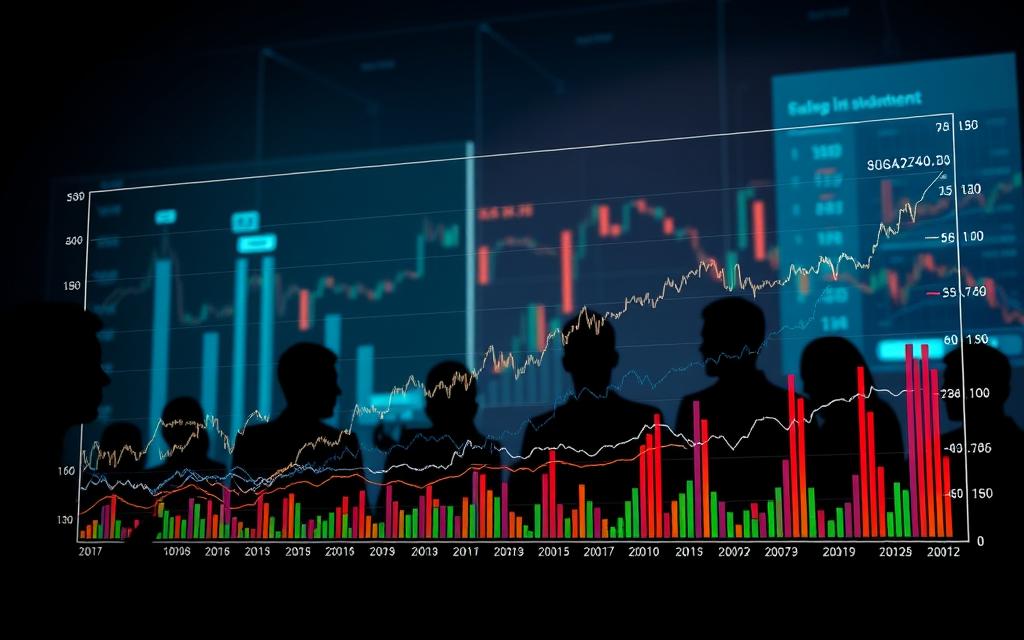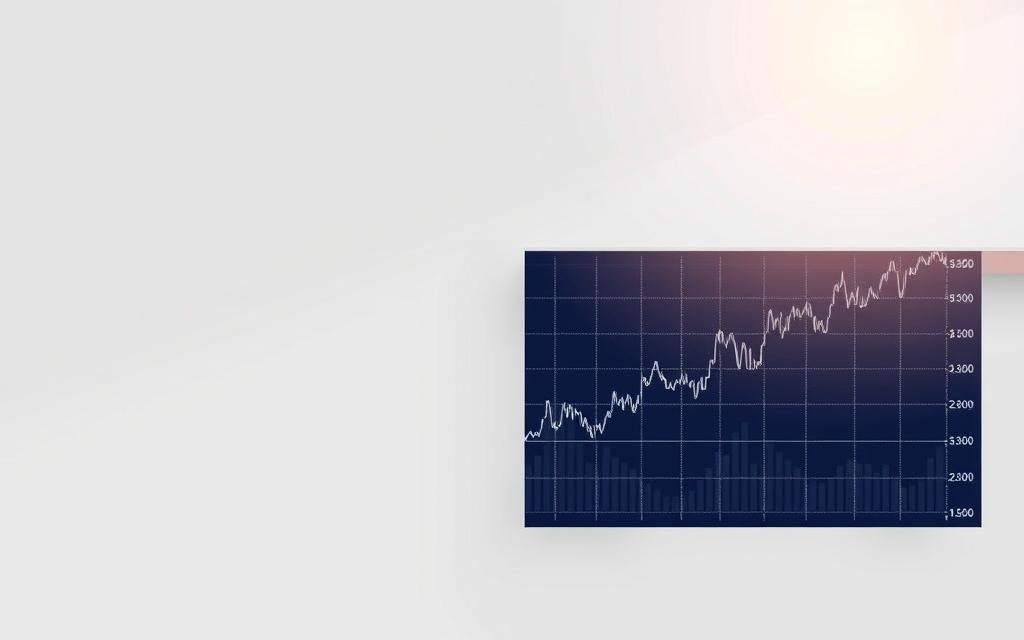Table of Contents
The crypto market continues to attract attention with its dramatic price movements and growth potential. Bitcoin’s staggering 180 million percent increase since 2010 demonstrates the asset class’s transformative power.
Recent market momentum in 2024 reflects growing institutional adoption and regulatory clarity. The U.S. election cycle contributed to Bitcoin reaching $93,000, showcasing how macroeconomic events impact digital assets.
Volatility remains a defining characteristic of crypto investments. Price swings often stem from speculation, policy changes, and global economic trends. Savvy investors mitigate risk through strategies like dollar-cost averaging and long-term holding.
Understanding project fundamentals and tokenomics proves essential before allocating funds. Security measures matter equally—reputable exchanges and secure wallets form the foundation of any investment strategy.
Should You Buy Crypto Now? A Market Overview
Digital asset markets reached unprecedented levels in 2024, fueled by institutional adoption and regulatory milestones. Bitcoin’s climb to $93,000 in November underscored its growing role as a strategic asset, while spot ETF approvals opened floodgates for traditional investors.
The 2024 Crypto Rally and All-Time High
Bitcoin’s all-time high followed a trifecta of catalysts: the April halving, U.S. election results, and ETF greenlights. The halving slashed new supply by 50%, historically triggering price surges within 12–18 months.
Post-election, the Trump administration’s Strategic Bitcoin Reserve proposal added momentum. BlackRock’s spot ETF alone attracted $10B inflows, cementing crypto’s institutional legitimacy.
Key Factors Driving Current Prices
Volatility persists, but 2024’s rally reflects deeper shifts:
- Supply shock: Post-halving, miners now produce 450 BTC/day vs. 900 BTC pre-April.
- Policy tailwinds: Proposed tax incentives for crypto holdings could further boost demand.
- Macro trends: 30% YTD growth outpaced Nasdaq despite tariff uncertainties.
Mastercard’s stablecoin integration and MicroStrategy’s $2B Bitcoin purchases highlight widening corporate adoption. As market infrastructure matures, crypto’s risk-reward profile evolves.
Is Cryptocurrency a Good Investment in 2024?
Investors face a complex landscape when evaluating digital assets in 2024. The asset class delivers unmatched growth potential but carries unique challenges. Balancing these factors requires understanding how crypto compares to traditional markets.

Comparing Crypto to Traditional Assets
Digital assets historically outperform conventional investments, but with greater volatility. Consider these annualized returns since 2015:
| Asset Class | Avg. Return | Max Drawdown | Liquidity |
|---|---|---|---|
| Bitcoin | 142% | -83% | High |
| S&P 500 | 10.2% | -34% | Very High |
| Gold | 5.8% | -45% | High |
DeFi platforms now offer features absent in traditional finance:
- 24/7 global markets without intermediaries
- Yield opportunities exceeding 5% on stablecoins
- Programmable money through smart contracts
“Crypto assets behave like early-stage tech stocks but with global market access. Their risk profile demands portfolio adjustments.”
Risks Every Investor Should Know
The highly volatile nature of digital assets presents unique challenges:
Regulatory uncertainty persists despite 2024 advancements. The SEC recently targeted three altcoin projects as unregistered securities. Cross-border tax compliance grows more complex with decentralized exchanges.
Project failure rates remain alarmingly high. Over 70% of tokens launched since 2020 now trade below their listing price. Researching team credentials and tokenomics proves essential.
Liquidity risks emerge during market stress. Smaller altcoins often see 50%+ price gaps between buy/sell orders. This contrasts sharply with blue-chip stocks that maintain tight spreads.
Strategic investors mitigate these risks through:
- Allocating only risk-capital (5-15% of portfolio)
- Using cold storage for long-term holdings
- Diversifying across market caps and sectors
Is It Too Late to Buy Crypto?
Bitcoin’s meteoric rise since 2015 challenges traditional notions of wealth creation. From $300 to $93,000 in nine years, its 31,000% growth outpaces every major asset class. Yet, the question lingers: does crypto still offer value for new investors?
Bitcoin’s Historical Performance
Bitcoin’s journey reflects unmatched resilience. Despite four bear markets, it achieved a new all-time high in 2024. Key milestones:
- 2015–2017: Climbed from $300 to $20,000, fueled by retail adoption.
- 2020–2021: Pandemic-era stimulus drove institutional buying, peaking at $69,000.
- 2024: Halving and ETF approvals propelled prices to $93,000.
Market volatility remains, but long-term holders consistently profit. A $1,000 investment in 2015 would now exceed $310,000.
Emerging Altcoins with High Potential
Beyond Bitcoin, altcoins diversify portfolio opportunities:
| Project | Use Case | 2024 Growth |
|---|---|---|
| Ethereum | Smart contracts | +120% |
| Solana | 400 TPS speed | +210% |
| Ripple | CBDC partnerships | +85% |
| Chainlink | $80B+ secured | +150% |
“The next decade belongs to programmable money. Ethereum and Solana are building the rails for Web3’s future.”
DeFi and NFTs further expand crypto’s potential:
- DeFi platforms manage $100B+ in locked assets, offering yields up to 12%.
- NFT art sales hit $25B in 2024, merging finance with digital culture.
Time in the Market vs. Timing the Market
Successful investing often comes down to patience versus prediction in volatile markets. While short-term traders chase price swings, long-term holders historically reap exponential growth. Data from the past decade reveals which strategy delivers superior results.

Long-Term Holding: The Bitcoin Case Study
A $300 investment in Bitcoin in 2015 ballooned to $93,000 by 2024—a 310x return. This underscores the value of time in the market over timing fluctuations. Fidelity research confirms 5-year holders outperform active traders by 400%.
Key drivers behind this growth:
- Halving events reducing supply every four years
- Institutional adoption post-2020 (MicroStrategy, ETFs)
- Network effects as global users doubled since 2018
The Pitfalls of Short-Term Trading
Coinbase reports 80% of day traders lose money, often due to emotional decisions during 30% weekly swings. In 2020, panic selling at $30,000 caused many to miss 2024’s $93,000 peak.
Common risks for active traders:
- Tax complexities from frequent transactions
- Liquidity gaps in altcoins during downturns
- Psychological stress from constant price monitoring
“The volatility that tempts traders is precisely why holding works. Bitcoin’s 83% drawdowns always recovered to new highs.”
For those exploring crypto investment strategies, historical patterns favor disciplined holding. As market cycles repeat, the advantage shifts to those who prioritize time over timing.
Dollar Cost Averaging: A Smarter Approach?
Market turbulence makes consistent investing strategies crucial for crypto portfolios. Dollar cost averaging (DCA) systematically allocates fixed amounts over period time, smoothing out price volatility. This method gained popularity as 65% of DCA users avoided 2022’s worst losses.

How DCA Reduces Volatility Risk
The approach neutralizes emotional decisions during price swings. A $500 monthly DCA in 2024 acquired Bitcoin at an average $87,000 despite ranging between $80K-$95K.
Psychological benefits include:
- Automated purchases remove timing anxiety
- Lower average entry prices during downturns
- Consistent participation across market cycles
Charles Schwab reports 43% of millennial investors now use DCA tools. This reflects growing recognition of its risk-mitigation properties.
DCA vs. Lump-Sum Investing
Gemini’s 2024 study shows DCA outperformed lump-sum investments 70% of the time. Backtested results reveal:
| Method | 3-Year Return | Max Drawdown |
|---|---|---|
| DCA | 210% | -34% |
| Lump-Sum | 180% | -52% |
“Attempting to ‘buy the dip’ without algorithmic precision often backfires. DCA provides mathematical discipline most investors lack.”
The data confirms dollar cost averaging delivers superior returns for most retail investors facing market volatility.
Current Events Shaping the Crypto Market
Policy shifts and financial innovations are reshaping cryptocurrency adoption at unprecedented speed. The first quarter of 2024 witnessed groundbreaking developments that transformed digital assets into mainstream strategic assets. From Washington to Wall Street, these changes are redefining how government and finance intersect with blockchain technology.

Political and Regulatory Impacts
State-level initiatives are accelerating crypto integration. Texas now offers 30% tax rebates for Bitcoin mining operations, attracting firms like Riot Platforms to expand facilities. Arizona followed by allocating 1% of its treasury reserves to spot bitcoin holdings.
At the federal level, proposed IRS Form 1099-DA would standardize crypto tax reporting by 2025. This comes alongside former President Trump’s controversial $50B government Bitcoin reserve proposal. Such measures signal growing political acceptance of digital assets as legitimate investment vehicles.
Spot Bitcoin ETFs and Institutional Adoption
The SEC’s approval of 11 spot bitcoin ETFs in January 2024 marked a watershed moment. BlackRock’s IBIT ETF alone attracted $15B in assets within six months, demonstrating robust institutional demand. This product category now represents 12% of all ETF inflows this year.
| Institution | Bitcoin Holdings | Market Impact |
|---|---|---|
| MicroStrategy | $10B | +140% since 2020 |
| BlackRock ETF | $15B AUM | 30% institutional share |
| Fidelity ETF | $7B AUM | 15% market share |
Emerging infrastructure like FedNow’s potential CBDC integration could further bridge traditional finance with blockchain services. As Cathie Wood noted: “We’re witnessing the convergence of monetary policy and cryptographic verification—a transformation as significant as the internet’s rise.”
“The ETF approvals didn’t just open doors—they demolished walls. Pension funds and endowments now have regulated access to crypto’s growth potential.”
These developments confirm crypto’s evolution from speculative stocks to established strategic assets in global markets. The institutional floodgates have opened, with spot bitcoin products leading the charge.
Conclusion
Navigating digital asset investments requires balancing opportunity with caution. Bitcoin’s 180 million percent growth since 2010 shows the crypto market’s transformative power, yet demands careful strategy.
Five-year holding periods historically outperform short-term trading. Allocating over 5% of net worth remains risky despite the investment potential. Time consistently rewards patient participants.
Market volatility makes hybrid approaches effective. Consider splitting portfolio allocations between dollar-cost averaging (60%) and long-term holdings (40%). This balances entry prices with growth exposure.
Tools like Koinly simplify tax reporting for crypto transactions. As the market evolves, disciplined strategies outperform emotional decisions.
FAQ
What factors influence cryptocurrency prices in 2024?
Market volatility, institutional adoption, regulatory changes, and macroeconomic trends heavily impact prices. Spot Bitcoin ETFs and government policies also play a key role.
How does crypto compare to traditional assets like stocks and gold?
Cryptocurrencies offer higher growth potential but come with greater risk. Unlike stocks or gold, digital assets are highly volatile, making them a strategic asset for diversified portfolios.
Has Bitcoin’s historical performance justified long-term holding?
Yes. Despite short-term price swings, Bitcoin has delivered strong returns over multi-year periods. Investors who held since 2015 saw significant value appreciation.
Is dollar-cost averaging better than lump-sum investing?
Dollar-cost averaging reduces risk by spreading investments over time. It smooths out market volatility, while lump-sum investing requires precise timing.
Are emerging altcoins worth considering?
Some altcoins show high potential but carry more risk than Bitcoin. Research projects with strong fundamentals before adding them to your portfolio.
How do spot Bitcoin ETFs affect the market?
These ETFs increase accessibility, driving institutional adoption. They add liquidity and stability, making crypto a more mainstream investment.
What risks should investors be aware of?
Regulatory uncertainty, security threats, and extreme price swings are major risks. Always assess your risk tolerance before allocating funds.









